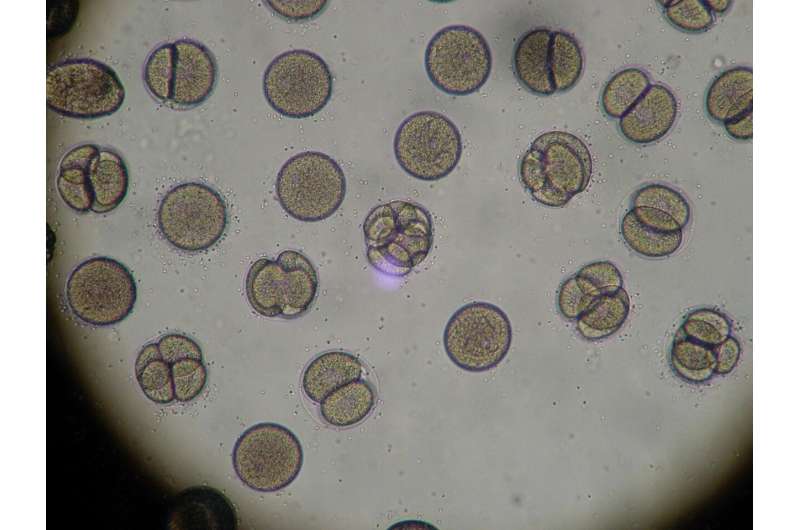Credit: Pixabay/CC0 Public Domain
A team of researchers affiliated with a host of institutions across Japan has created, for the first time, viable mice eggs from scratch using stem cells. In their paper published in the journal Science, the group describes their process and where they believe it might be used. Lin Yang and Huck-Hui Ng with the Genome Institute of Singapore have published a Perspective piece in the same journal issue outlining the work done by the team in Japan.
In 2011 in vitro gametogenesis pioneer Katsuhiko Hayashi and his team produced the first sperm cells grown from stem cells. Then in 2016, Hayashi and another team produced the first mammalian eggs using stem cells. But that effort had a caveat—the precursor eggs had to be incubated in a bath of ovarian tissue to be viable. In this new effort, Hayashi and yet another team have overcome the need for the ovarian tissue and created the first viable mouse egg cells from scratch.
The team focused on the ingredients present in the ovarian tissue bath and developed a new incubator that did not require it. After five years, they found the right chemical mix and used it to create an incubator bath that worked the same way as the ovarian tissue bath. With all the parts in place, the researchers grew oocytes from stem cells in the fashion that had been developed five years earlier. They then set them in the incubator bath and watched as the mixture grew into viable mice eggs. The researchers ensured they were viable by inseminating several of the eggs, implanting them in a female mouse's uterus and then letting nature take its course. The artificially impregnated mice gave birth to offspring that were then allowed to grow to maturity and reproduce naturally.
Such experiments cannot be carried out with humans, of course, but the researchers suggest their work may one day apply to human reproduction—allowing infertile women to bear children, for example, or even allowing same-sex couples to have children with DNA from both parents. Meanwhile, the researchers are continuing their efforts and next plan to repeat their work with marmosets.
More information: Takashi Yoshino et al, Generation of ovarian follicles from mouse pluripotent stem cells, Science (2021). DOI: 10.1126/science.abe0237
Lin Yang et al, The making of an ovarian niche, Science (2021). DOI: 10.1126/science.abj8347
Journal information: Science
© 2021 Science X Network






















